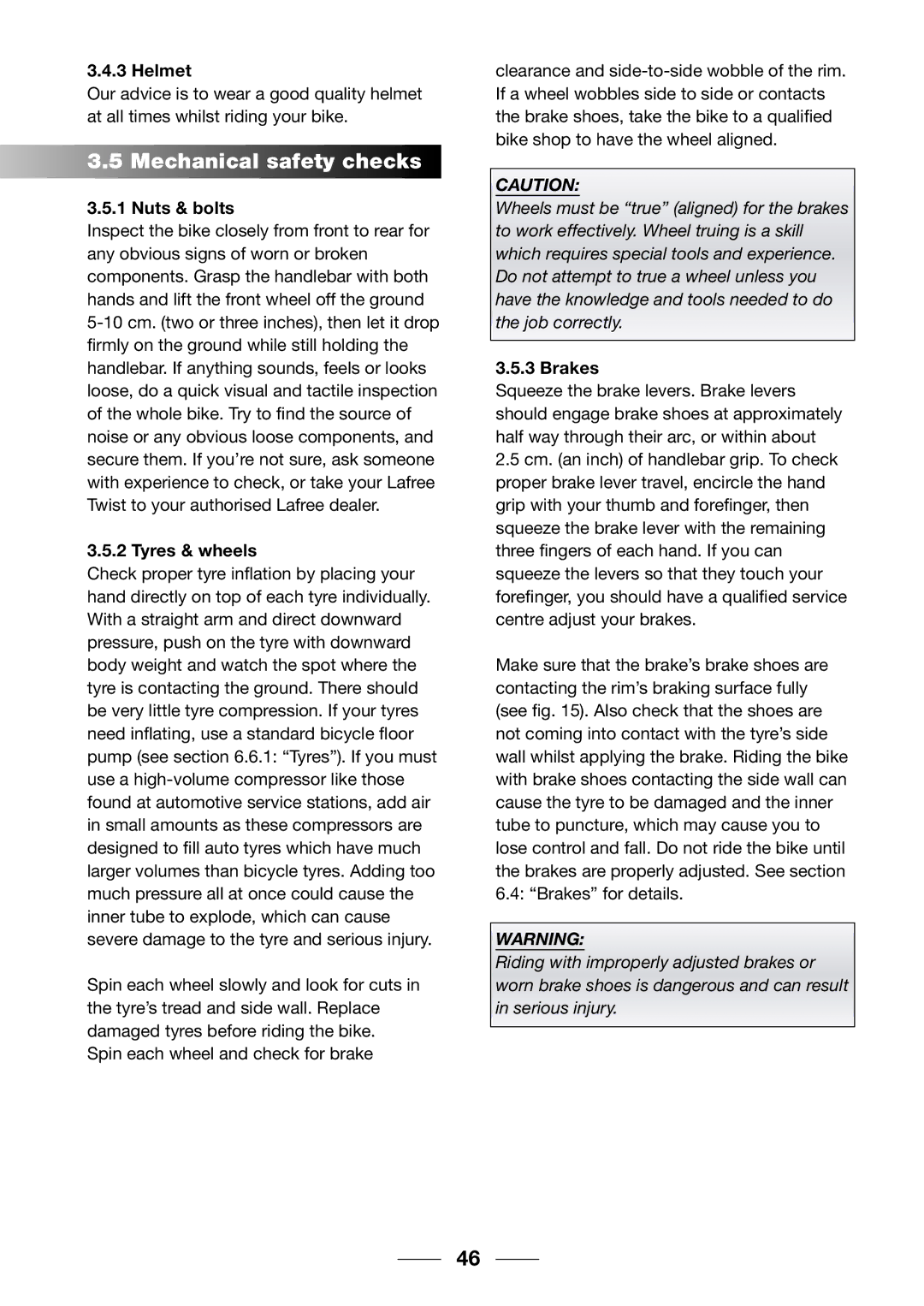
3.4.3 Helmet
Our advice is to wear a good quality helmet at all times whilst riding your bike.



















 3.5
3.5

 Mechanical
Mechanical


 safety
safety

 checks
checks





3.5.1 Nuts & bolts
Inspect the bike closely from front to rear for any obvious signs of worn or broken components. Grasp the handlebar with both hands and lift the front wheel off the ground
3.5.2 Tyres & wheels
Check proper tyre inflation by placing your hand directly on top of each tyre individually. With a straight arm and direct downward pressure, push on the tyre with downward body weight and watch the spot where the tyre is contacting the ground. There should be very little tyre compression. If your tyres need inflating, use a standard bicycle floor pump (see section 6.6.1: “Tyres”). If you must use a
Spin each wheel slowly and look for cuts in the tyre’s tread and side wall. Replace damaged tyres before riding the bike.
Spin each wheel and check for brake
clearance and
CAUTION:
Wheels must be “true” (aligned) for the brakes
to work effectively. Wheel truing is a skill
which requires special tools and experience.
Do not attempt to true a wheel unless you
have the knowledge and tools needed to do
the job correctly.
3.5.3 Brakes
Squeeze the brake levers. Brake levers should engage brake shoes at approximately half way through their arc, or within about
2.5cm. (an inch) of handlebar grip. To check proper brake lever travel, encircle the hand grip with your thumb and forefinger, then squeeze the brake lever with the remaining three fingers of each hand. If you can squeeze the levers so that they touch your forefinger, you should have a qualified service centre adjust your brakes.
Make sure that the brake’s brake shoes are contacting the rim’s braking surface fully (see fig. 15). Also check that the shoes are not coming into contact with the tyre’s side wall whilst applying the brake. Riding the bike with brake shoes contacting the side wall can cause the tyre to be damaged and the inner tube to puncture, which may cause you to lose control and fall. Do not ride the bike until the brakes are properly adjusted. See section 6.4: “Brakes” for details.
WARNING:
Riding with improperly adjusted brakes or
worn brake shoes is dangerous and can result
in serious injury.
46
